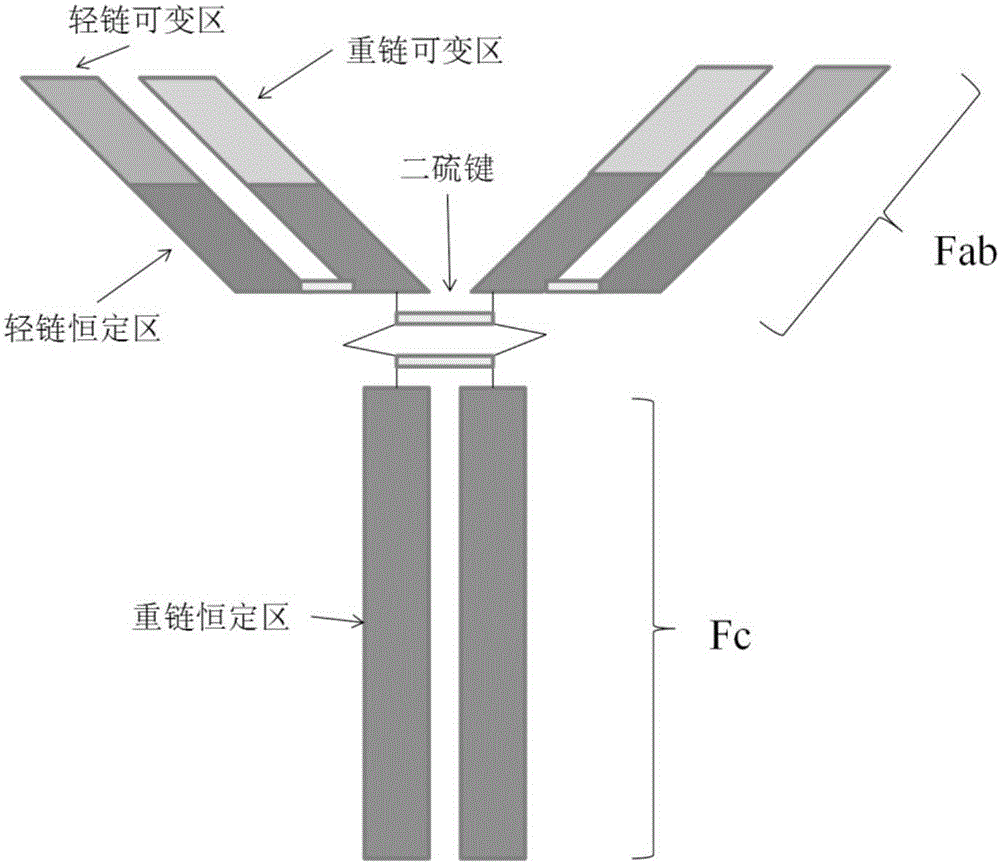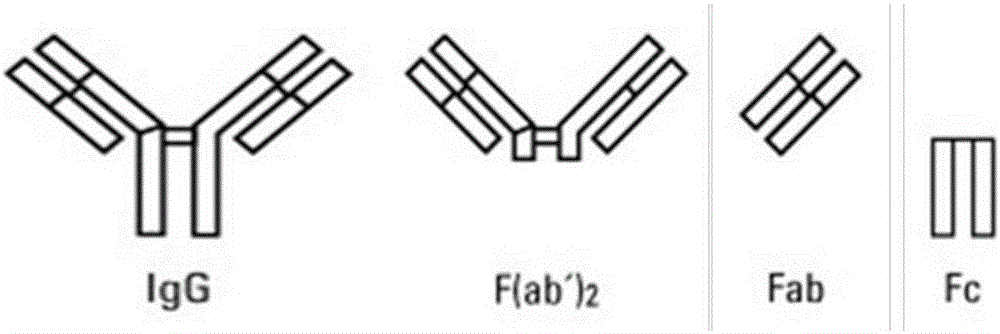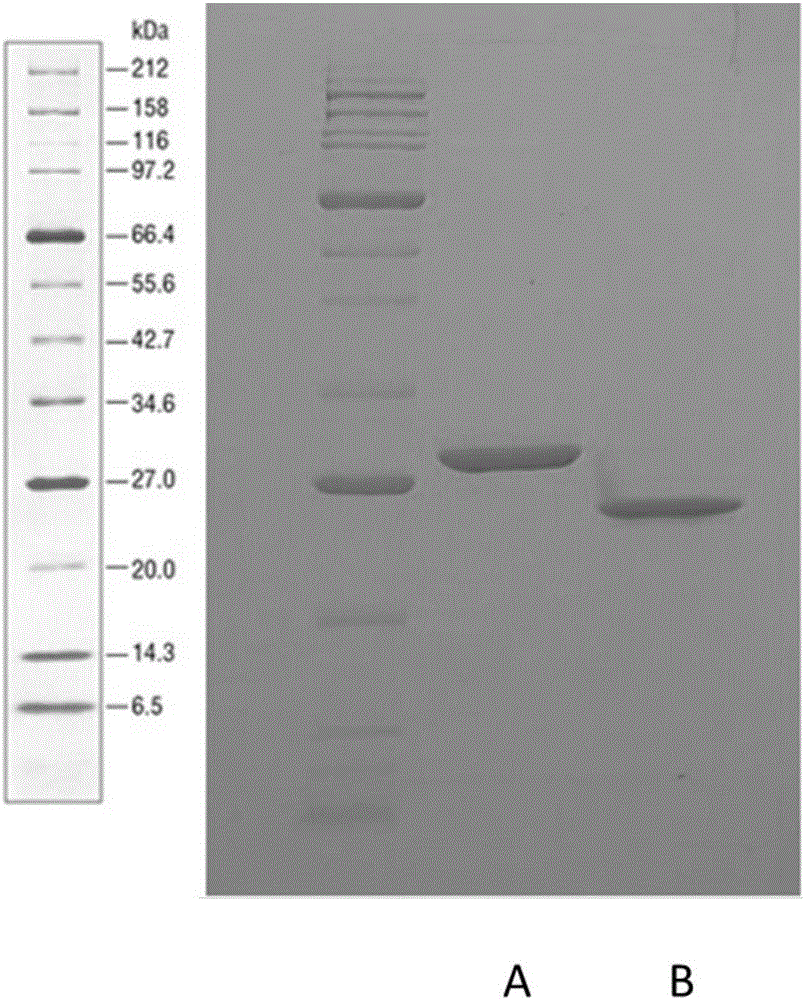Method for determining antibody amino acid sequence in blood
An amino acid and antibody technology, applied in the field of biochemistry, can solve the problems of inability to prepare antibodies, impossible to achieve, difficult amino acid sequences, etc., and achieve the effect of a wide range of sample sources.
- Summary
- Abstract
- Description
- Claims
- Application Information
AI Technical Summary
Problems solved by technology
Method used
Image
Examples
Embodiment 1
[0120] Preparation of human protein PD-L1 protein
[0121] Programmed death protein 1 (PD1, Programmed death 1) is a type I transmembrane glycoprotein that regulates the body's immune response, and programmed death protein ligand 1 (PD-L1, Programmed death 1 ligand) is a ligand for PD1 protein. We cloned the gene of the extracellular part of human PD-L1, constructed an expression vector, and expressed the extracellular part of human PD-L1 in Escherichia coli. The expressed human PD-L1 protein (the amino acid sequence of the human PD-L1 protein is shown in SEQ ID NO: 5) is mainly in the inclusion body of Escherichia coli. The expressed Escherichia coli was collected by centrifugation at 5000 rpm at 4°C. The Escherichia coli was lysed with an ultrasonic instrument and centrifuged at high speed to obtain inclusion bodies. The collected inclusion bodies were dissolved with 8M urea, and the protein was refolded by step-by-step dialysis. The renatured protein is purified with an ...
Embodiment 2
[0124] Preparation of Human Protein PD-L1 Antigen Affinity Chromatography Column
[0125] We linked the expressed and purified PD-L1 protein in Example 1 to the surface of the activated agarose colloid through a chemical reaction, thereby obtaining a PD-L1 antigen affinity chromatography column. The preparation process is as follows: in the first step, the expressed and purified PD-L1 protein is linked to a biotin group using the SULFO-NHS-BIOTIN kit of Thermo Fisher (THERMO); in the second step, the biotin group is linked to The aggregated PD-L1 protein was attached to a STREPTAVIDIN column (HITRAPSTREPTAVIDIN HP column produced by General Electric Company).
Embodiment 3
[0127] Immunization of rabbits to obtain anti-human protein PD-L1 antibody
[0128] The highly active and high-purity PD-L1 protein purified in Example 1 was used to immunize white rabbits. After multiple immunizations for about three months, the enzyme-linked immunosorbent assay (Elisa) test confirmed that the rabbit blood already contained a high amount of anti-PD-L1 antibody. Rabbit blood was collected and centrifuged at low temperature to remove blood cells to obtain plasma containing PD-L1 antibody. The amount of blood collected was approximately 40 mL per animal, and was used for the next experiment after freeze-drying.
PUM
| Property | Measurement | Unit |
|---|---|---|
| Molecular weight | aaaaa | aaaaa |
Abstract
Description
Claims
Application Information
 Login to View More
Login to View More - R&D
- Intellectual Property
- Life Sciences
- Materials
- Tech Scout
- Unparalleled Data Quality
- Higher Quality Content
- 60% Fewer Hallucinations
Browse by: Latest US Patents, China's latest patents, Technical Efficacy Thesaurus, Application Domain, Technology Topic, Popular Technical Reports.
© 2025 PatSnap. All rights reserved.Legal|Privacy policy|Modern Slavery Act Transparency Statement|Sitemap|About US| Contact US: help@patsnap.com



